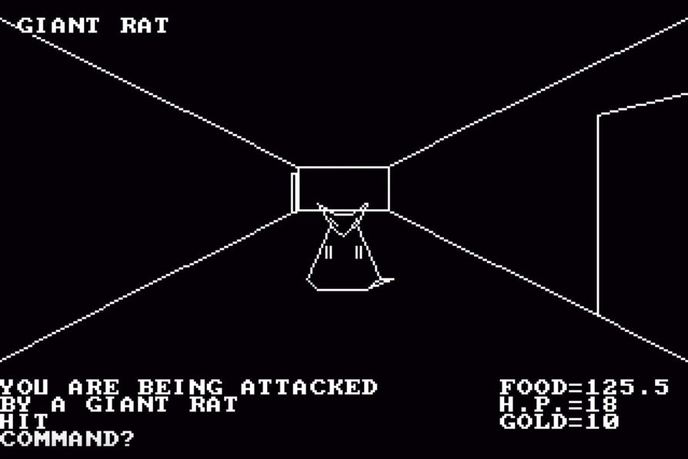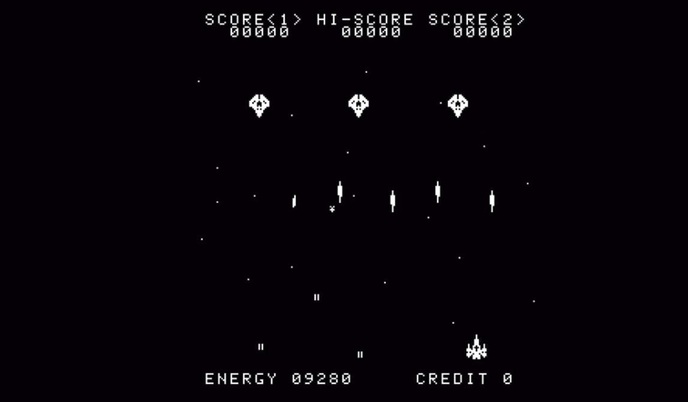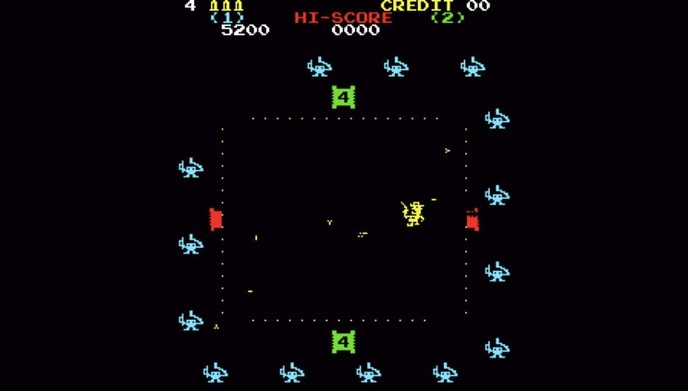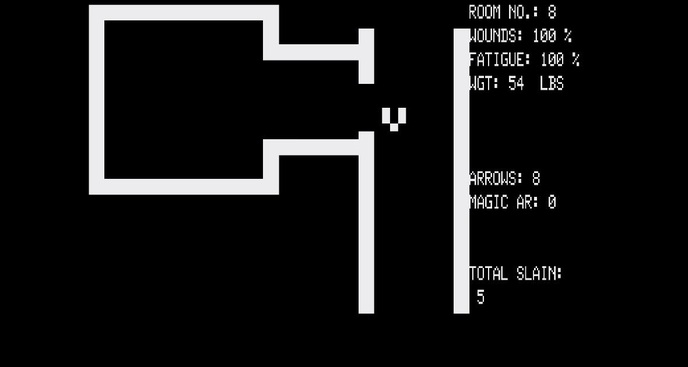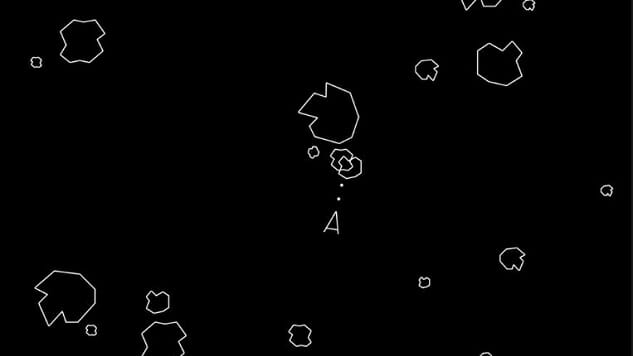
Yes, videogames existed in 1979. Space Invaders came out the year before, the Atari 2600 the year before that, and Pong all the way back in 1972. Spacewar was created in 1962, and there were even games made for various computers dating back to 1950. It wasn’t exactly a booming industry back then, of course, which is why most people associate the dawn of videogames with the late ‘70s and early ‘80s. If the computer games of the ‘50s and ‘60s were almost exclusively the domain of computer programmers and computer science majors, the big games of the ‘70s represent the medium’s true mainstream breakthrough into the bars, arcades and living rooms of America.
Some of the most popular and groundbreaking games of all time were originally released in 1979—games that are still remembered and played to this day, 40 years later. Crucial developments that impacted the industry forever were made in both technology and game design. It’s a year worth looking back at, and so that’s what we’re doing, by commemorating the best and most important games released that year.
This list is in alphabetical order, and is not ranked.
Adventure
Designer: Warren Robinett
Publisher: Atari
Original Platform: Atari 2600
The Atari 2600 was even more technologically limited than arcade games were in 1979, so to pull off this proto-RPG designer Warren Robinett had to focus more on the stakes than the scope. It might not feel epic in length today, but the tension and stress you’ll feel when you encounter one of the game’s dragons (especially if you’re unarmed) is so substantial that it makes up for the brevity. And although the map will feel microscopic compared to later standards, a game with so many different screens was a rarity at the time. It’s also packed full of secrets you have to discover on your own (or learn about from other kids at school), including the first Easter egg. Despite its limitations, Adventure more than lives up to its name.
Akalabeth: World of Doom
Designer: Richard Garriott
Publisher: Self-published; rereleased by California Pacific Computer Co. in 1980
Original Platform: Apple II
The first game by Richard “Lord British” Garriott is essentially the proto-Ultima. In fact it was rereleased as Ultima 0 almost two decades later. The Texas teenager built a Dungeons & Dragons-style adventure that feels barebones today but was groundbreaking 40 years ago. The combination of a top-down overworld map and first-person dungeons will be familiar to anybody who played computer role-playing games in the ‘80s. Like many of the items on this list, it’s a dated game that popularized timeless gaming concepts.
Asteroids
Designers: Lyle Rains, Ed Logg, Dominic Walsh
Publisher: Atari
Original Platform: Arcade
Asteroids is one of those games that’s so fundamental to the medium that it’s weird to think of a time when it didn’t exist. It didn’t hit arcades until 1979, though, when Atari developers Lyle Rains, Ed Logg and Dominic Walsh combined the shoot ‘em up stress of Space Invaders with the physics-based motion of Spacewar. The result was the best-selling game in Atari’s history, and about as iconic and influential a game that’s ever existed. Its black-and-white images looked dated within months of release, but the starkness and simplicity of those vector graphics give it an alien and retrofuturistic appeal not found in most games from its era.
Galaxian
Designer: Namco
Publisher: Namco / Midway (North America)
Original Platform: Arcade
Yes, Galaga was a sequel. Galaxian wasn’t quite the phenomenon that its follow-up was, but it was still a very successful game that updated the Space Invaders formula with a few crucial changes. First off, it was in color, which made it stand out in arcades at the time. Like Galaga, the alien ships aren’t fixed in formation—they will swoop down at your ship, doubling back to the top of the screen after each dive. A star field scrolls constantly in the background, providing a sense of motion to the whole proceedings. Galaxian was an important step forward for the fixed shooter, and a fascinating rough draft for the more complex and fully-formed Galaga.
Lunar Lander
Designers: Howard Delman, Rich Moore
Publisher: Atari
Original Platform: Arcade
Atari’s vector graphic take on the venerable lunar lander genre wasn’t quite the hit that Asteroids was—300 units of Asteroids actually shipped in Lunar Lander cabinets to meet up with demand. It might lack the strong pull of nostalgia found with that more famous game, but it has a similar appeal: it’s a tough balancing act built around physics and safely maneuvering your ship’s path. Only this time your goal is a clean landing, and not blowing up an entire asteroid belt.
Ozma Wars
Designer: Logitec Corp.
Publisher: SNK
Original Platform: Arcade
SNK’s Ozma Wars pretty much invented the health bar, and the idea of distinct levels. This Space Invaders devotee includes a numeric energy level that’s always ticking down as you sweep left to right and shoot at the spaceships that are attacking you. When you get hit, you take a considerable amount of damage. There are no lives, just that single reserve of energy, and once those digits hit zero your game is over. Gaming is an iterative medium, like pretty much all others, and this one facet of an otherwise unexceptional fixed shooter became one of the most common features in games.
Radar Scope
Designer: Nintendo
Publisher: Nintendo
Original Platform: Arcade
Nintendo’s Radar Scope is best known in America as a footnote, or the answer to a trivia question. It’s the first game Nintendo released under its own name in America, and after it failed in American arcades many of its cabinets were quickly reappropriated for Donkey Kong, the first game that Shigeru Miyamoto was the lead designer of. In the wake of Space Invaders, the game market was crowded with space shooters, and Radar Scope wasn’t able to break through over here despite being a hit in Japan. Its angled perspective gave it a unique visual hook, although it didn’t have much of an impact upon how it actually felt to play the game. Still, between its memorable sound effects, an early use of a health meter, and the escalation of points scored based on where on the grid you destroyed a ship, Radar Scope should be known as more than just the failed precursor to Nintendo’s first American smash.
Sheriff
Designer: Genyo Takeda / Nintendo
Publisher: Nintendo / Exidy (North America)
Original Platform: Arcade
If you’re wondering what’s happening with that archaic cowboy who occasionally shoots up the screen in Super Smash Bros., well, he’s one of Nintendo’s earliest characters. This shoot-’em-up sports a dual-joystick set-up similar to Robotron, with one joystick moving the sheriff and the other aiming his shots in eight different directions. He has to shoot his way through waves of bandits who generally hang out on the edge of the screen, but occasionally try to bum-rush the show. The charm and idiosyncrasy that would later become two of Nintendo’s chief trademarks can be found coursing through Sheriff’s steely blood.
Star Raiders
Designer: Doug Neubauer
Publisher: Atari
Original Platform: Atari 8-bit computers
The basic language of videogames was still being formulated in 1979 when Doug Neubauer made Star Raiders for the Atari 400/800 family of computers. This first-person outer space shooter essentially defined the basic tenets of a genre that would go on to include such popular series as Elite and Wing Commander. It’s a thrilling and surprisingly complex take on spaceship combat that should spark joy for any Star Trek or Star Wars fan, even today.
Temple of Apshai
Designers: Jon Freeman, Jeff Johnson
Publisher: Automated Simulations
Original Platform: TRS-80; Commodore PET
Arriving a few months earlier than Akalabeth, Temple of Apshai might be the first game to transport the rules of Dungeons & Dragons to a computer. This graphics-based dungeon crawler is almost shameless about that—it also has six characteristics, four of which share the same name as D&D’s attributes, and which can all go up to 18. Play also depends on consulting an included manual for written descriptions of the game world, which read like the work of a particularly enthusiastic dungeon master. The bulk of the game takes place in a dungeon with four levels, with a minimally-designed interface of white lines on a black backdrop that only reinforces how early this game came along. It might be hard to play today (a mid ‘80s remake is more palatable to our modern eyes) but it’s a crucial part of RPG history.
Garrett Martin edits Paste’s comedy and games sections. He’s on Twitter @grmartin.

